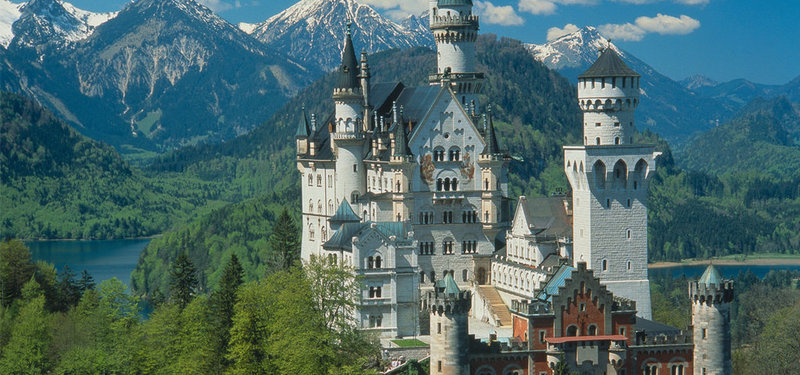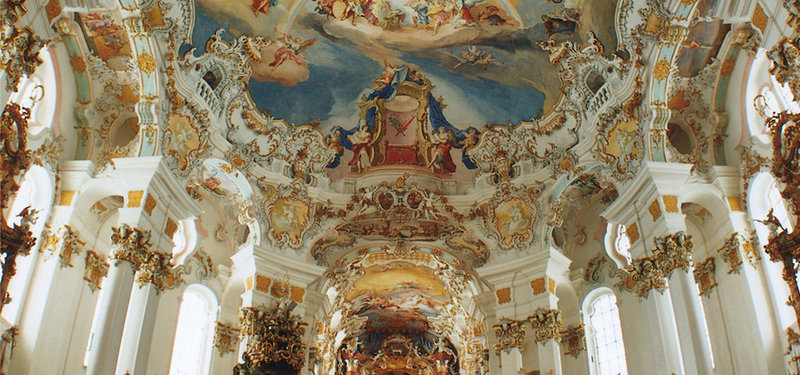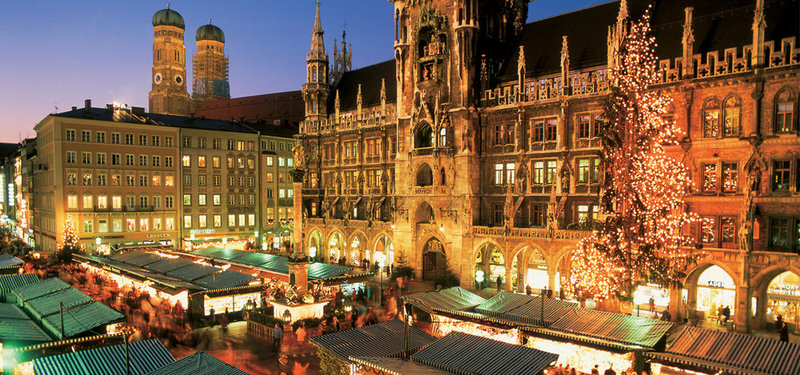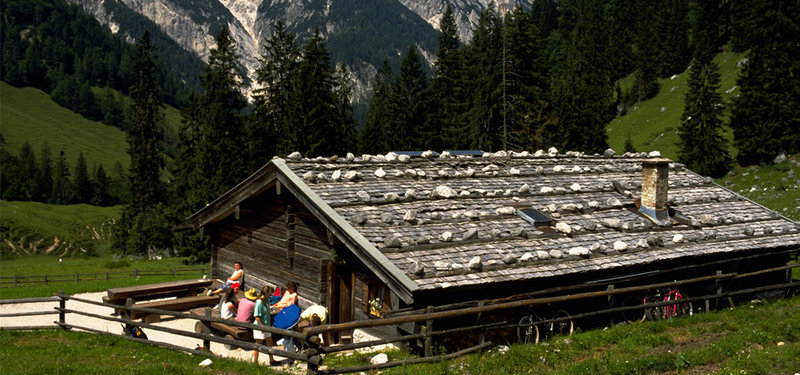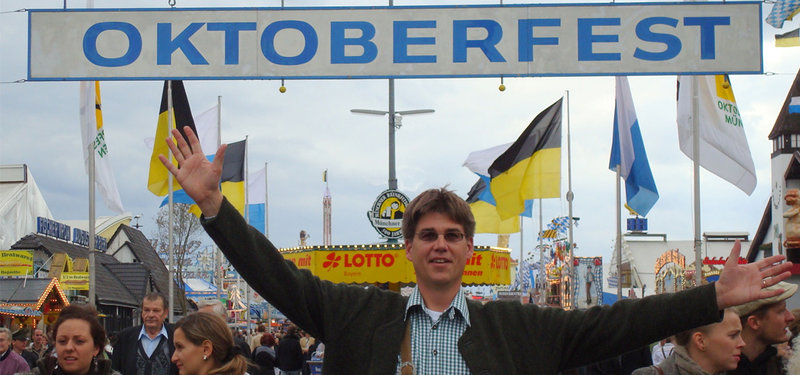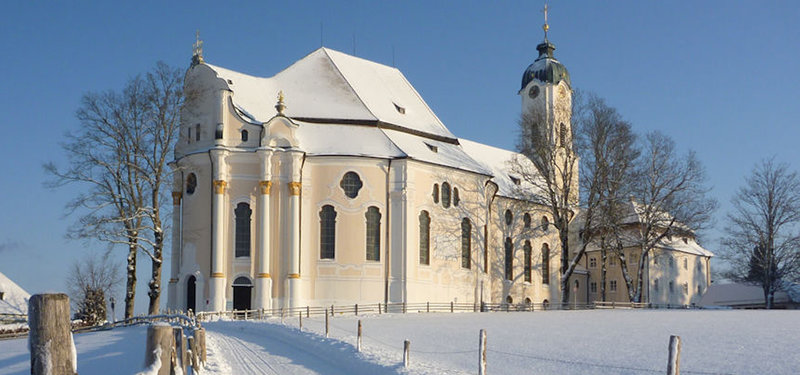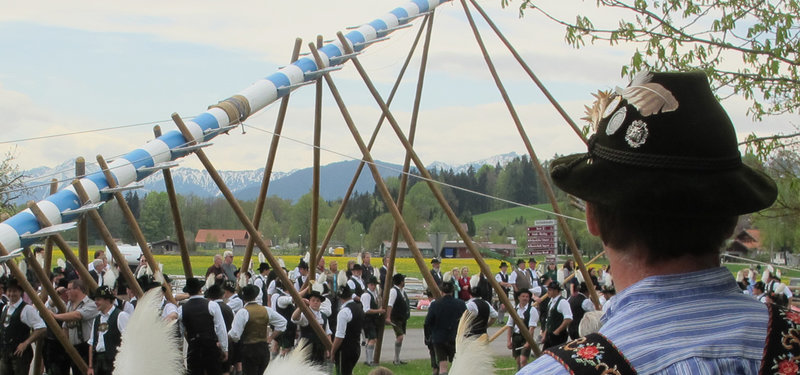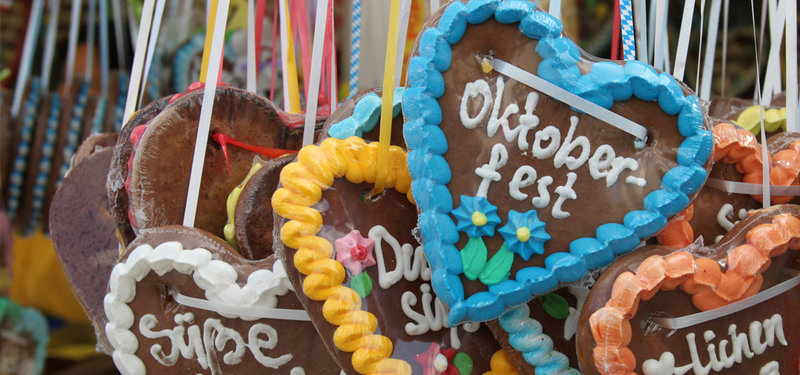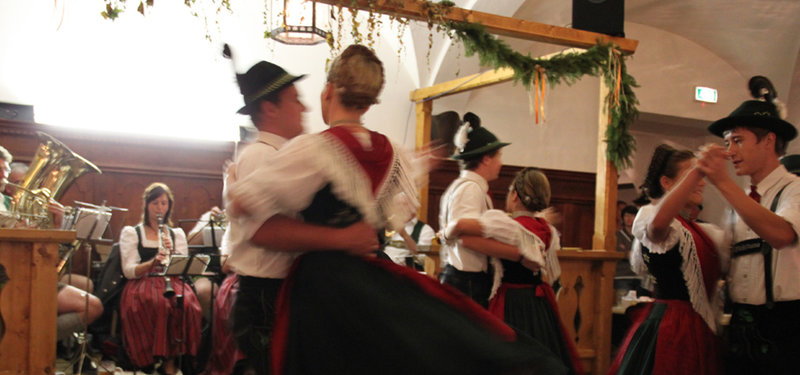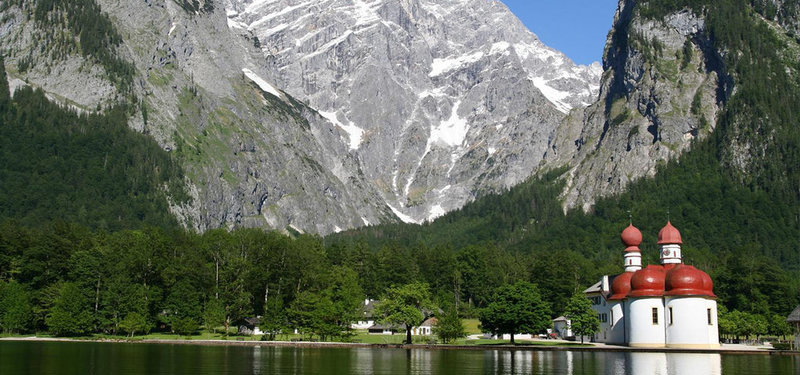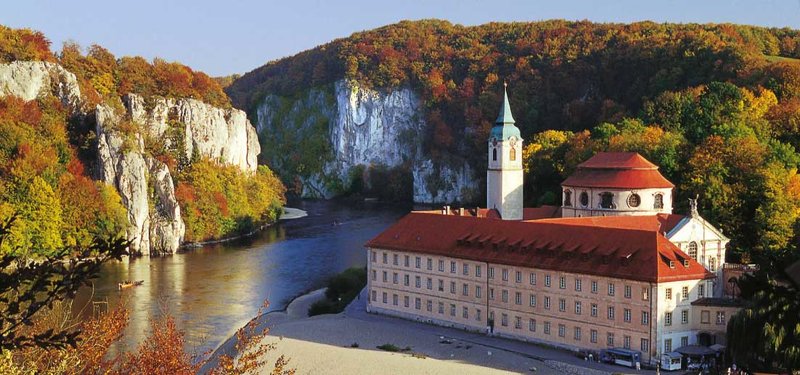What is your favorite tent at Oktoberfest? What Actually Happens inside the tents at Oktoberfest?
Many dream of visiting Oktoberfest. However, a lot of folks don't understand the deal. There's lot of information about the history, but here's some practical information to help you wrap your mind around what goes on there.
Most on this side of the pond picture some kind of "Beer Fest" event with just drinking to excess. That's really not it. Or, if that's your experience, you've missed the point.
The grounds are divided into two main sections - one side is all of the carnival-like attractions. The other side are all the various beer tents. However, these "tents" hold some 10,000 people inside. There are 14 main tents: Hippodrom, Armbrustschützenzelt, Hofbräu Festzelt, Hacker-Festzelt, Schottenhamel, Winzerer Fähnd'l, Schützen-Festzelt Käfer's Wies'n Schänke, Weinzelt, Löwenbräu-Festhalle, Bräurosl, Augustiner-Festhalle, Ochsenbraterei, Fischer-Vroni.
nce you are in a tent, what goes on there? The atmosphere varies depending on the time of day.When you have reservations, you can either get a lunch reservation (hours vary slightly in each tent) or an evening reservation.
Oktoberfest Tents
The tents are required to dial it down during midday. If you are in the tent then, you will hear live "Blasmusik" - Oom-pahstyle. This is a great time to sit at a table with a bunch of other folks and have a conversation, enjoy the great beer and food, and sway to the music. My favorite tents during the afternoon are the Augustiner and the Ochsenbraterei. Augustiner is the best beer in Munich and I've always had great friendly servers here (especially in Box 3!) . I like the Ochsenbraterei (Ox tent, for short) for the food. They roast a whole steer on a giant spit and you can order various parts of him - it's really awesome with a liter of Spaten to wash it down. Last year, we sat in the balcony and we had two male waiters who were extremely friendly and efficient - that took great care of us during our afternoon there. All in all, the atmosphere is much less hectic and the servers have more time to take care of you.
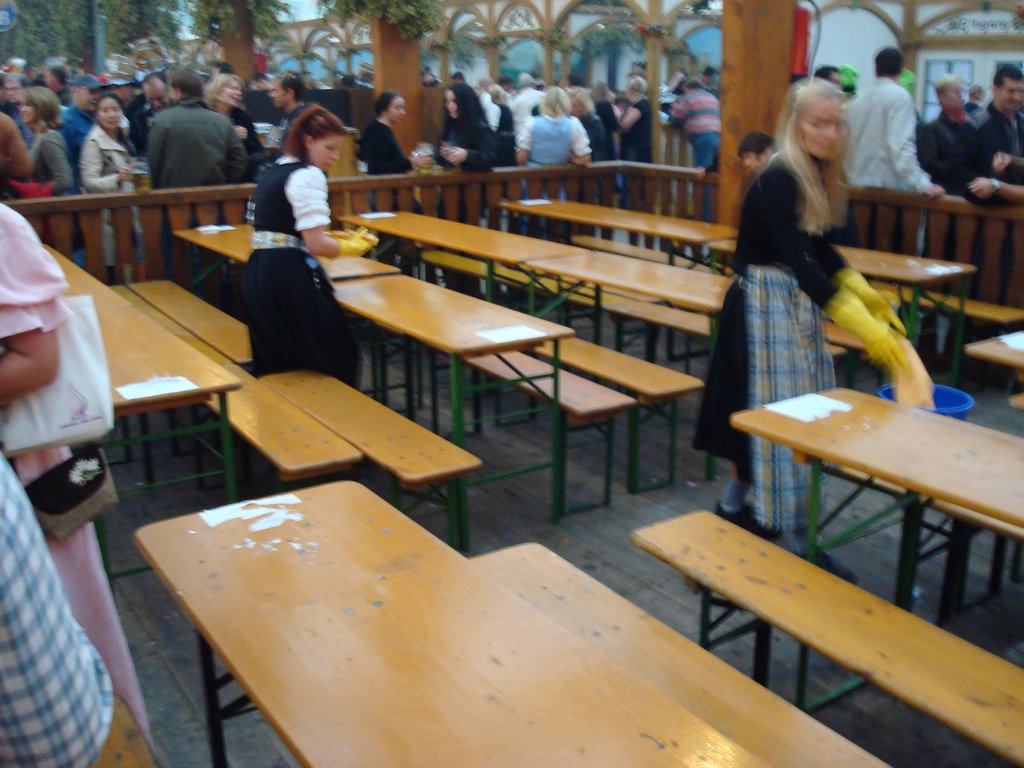
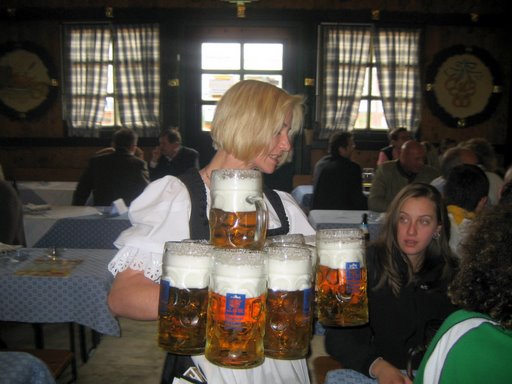
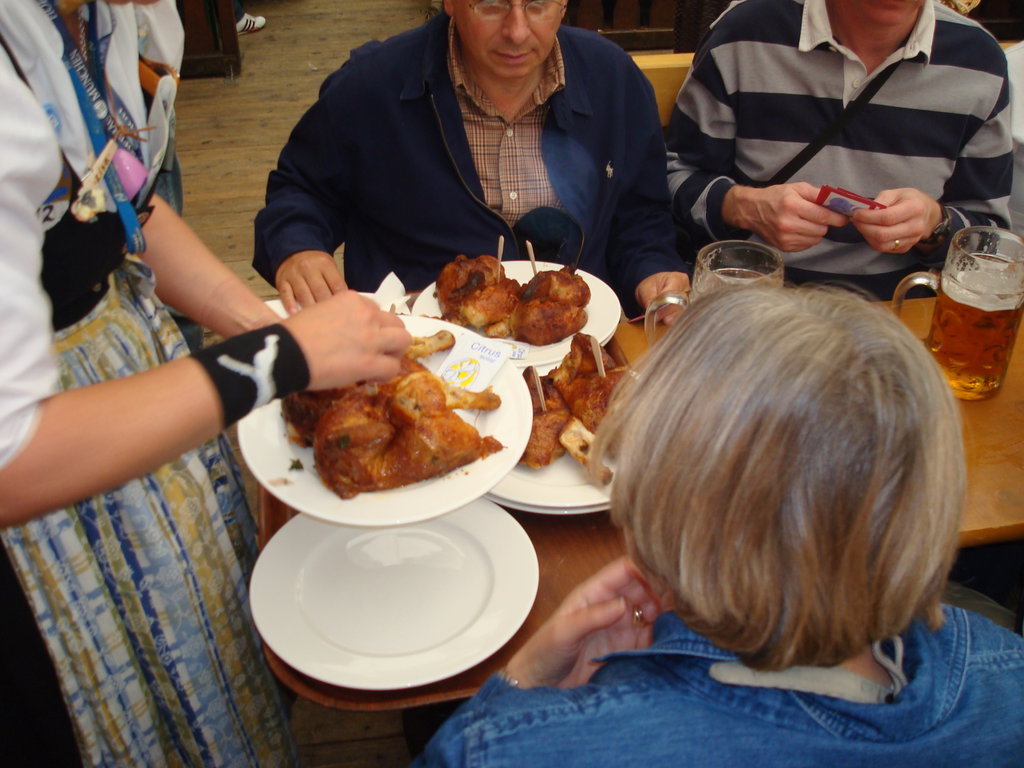
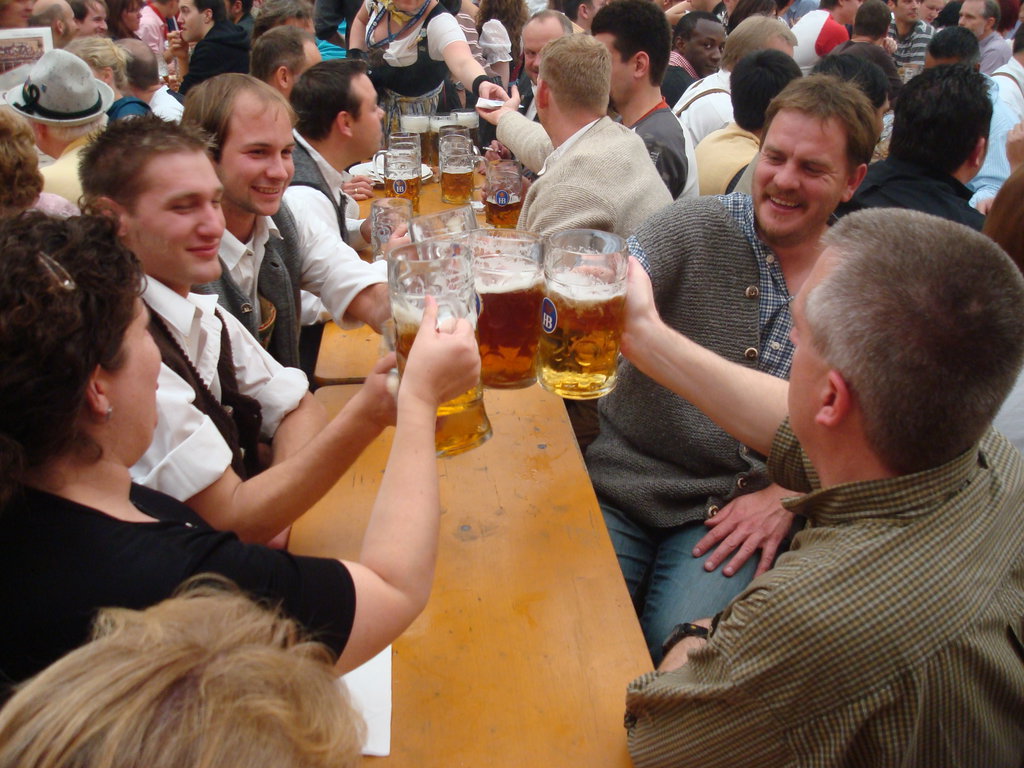
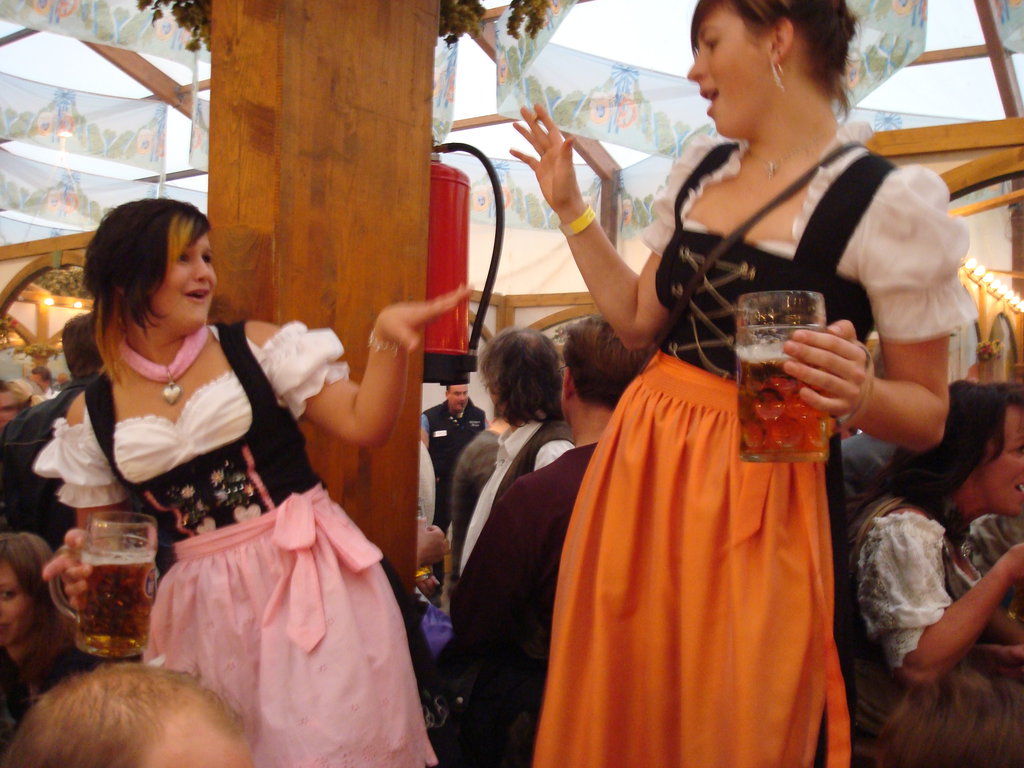
- Never bring your passport to Oktoberfest
- Don't bring more money than you need for one night
- Don't let your wife go to the bathroom by herself
- Go on the roller coasters BEFORE you visit the tents
- It's a marathon, not a sprint
- Respect your server, tip her well, and don't make her angry
- At night, just order the damn chicken
- Try the Radler
- If you hear a whistle, stop what you are doing immediately!
- Don't stay to the bitter end!
Marstall: For the "in" crowd. Trendy hip. Debuted in 2014 and is the successor of the famed Hippodrom Tent.
Armbrustschützenzelt: The tent for Cross-bowmen. Usually quite traditional
Hofbräu Festzelt: The "International" Tent. Wild in the evening. Aloysius statue covered in women's undergarments nightly.
Hacker-Festzelt: Very beautiful - the tent was decorated like a Theatrical stage set - beautiful artwork! Schottenhamel: Where the Mayor kicks off the festivities! Winzerer Fähnd?l: A traditional Paulaner tent with great food and excellent service Schützen-Festzelt: Complete with a shooting gallery. Guns and Beer - not only in the USA! Käfer's Wies'n Schänke: The gourmet's choice at the Wies'n. Famous for their food. Weinzelt: Not just beer, also Wine! Great music in the evening from the Blechblos'n! Löwenbräu-Festhalle: A really fun tent with a cool mechanical lion that roars on cue. Bräurosl: A traditonal, friendly tent serving Hacker-Pschorr beer. Augustiner-Festhalle: My personal favorite and the most sought reservation for the true beer lover. All known as the friendliest tent - the ladies in Box 3 are awesome - very patient! Ochsenbraterei: Tired of Chicken?Go here and have Ox, roasted on a spit. Phenomenal! Fischer-Vroni: Fish anyone? The other Augustiner Tent
Hacker-Festzelt: Very beautiful - the tent was decorated like a Theatrical stage set - beautiful artwork! Schottenhamel: Where the Mayor kicks off the festivities! Winzerer Fähnd?l: A traditional Paulaner tent with great food and excellent service Schützen-Festzelt: Complete with a shooting gallery. Guns and Beer - not only in the USA! Käfer's Wies'n Schänke: The gourmet's choice at the Wies'n. Famous for their food. Weinzelt: Not just beer, also Wine! Great music in the evening from the Blechblos'n! Löwenbräu-Festhalle: A really fun tent with a cool mechanical lion that roars on cue. Bräurosl: A traditonal, friendly tent serving Hacker-Pschorr beer. Augustiner-Festhalle: My personal favorite and the most sought reservation for the true beer lover. All known as the friendliest tent - the ladies in Box 3 are awesome - very patient! Ochsenbraterei: Tired of Chicken?Go here and have Ox, roasted on a spit. Phenomenal! Fischer-Vroni: Fish anyone? The other Augustiner Tent
Viehscheid
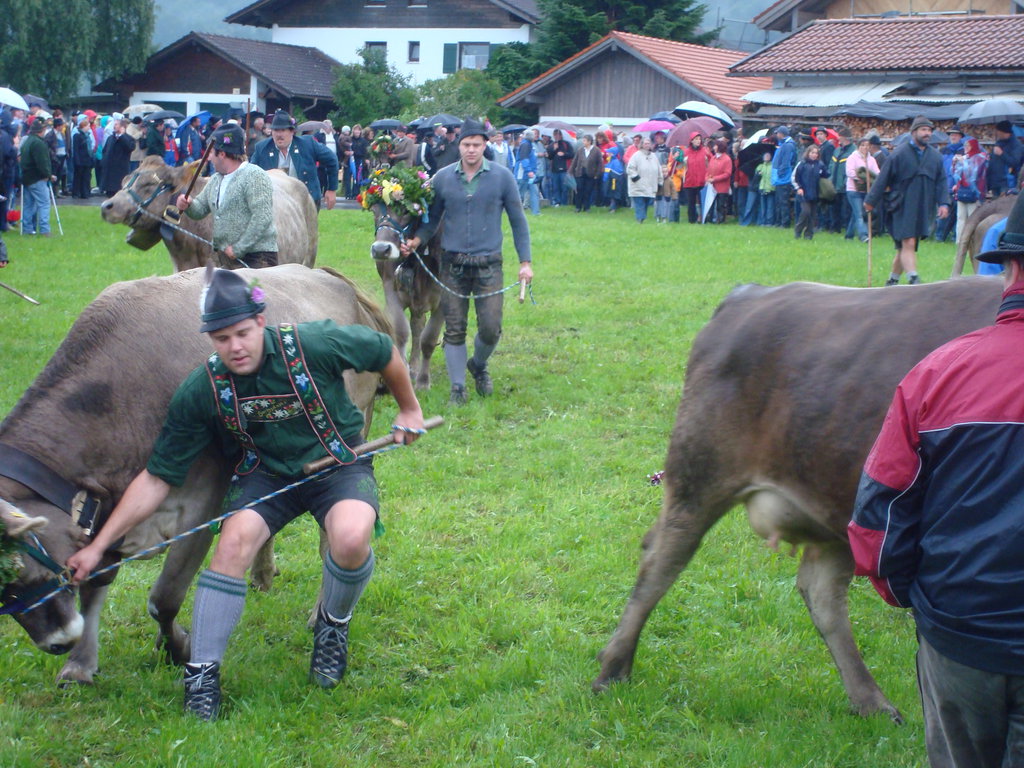
Beyond Beer at Oktoberfest
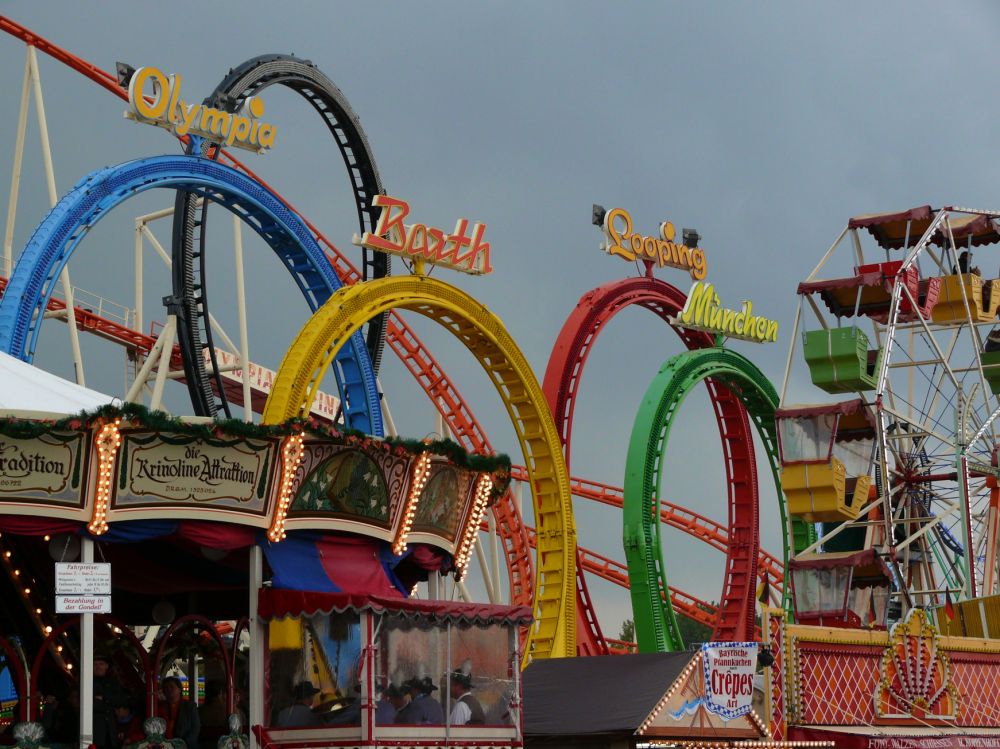
Starkbierfest
During Lent, Monks, in particular, should be fasting and refraining from solid food. One monk, Salavator, figured that while eating was verboten, drinking was not. Since he knew a thing or two about brewing beer, he brewed a batch of strong beer - "strong" meaning brewed with less water, leaving more grain in it. They say one liter of "starkbier" is like eating 12 pieces of bread. Salvator's brew was quite popular with the brothers, to say the least. However, one of them felt that what they were doing might not be quite "Kosher" and they resolved to send a shipment of the beer to Rome for the Pope to judge for himself.
The beer was loaded onto a wagon to begin it's long trek south. It bounced around on the horse-drawn flatbed as it crossed southern Germany and entered the Alps. The altitude increased and the temperature got cold; then warmer as they descended into the Alpine Valleys. Finally Austria was crossed and they arrived into Italy. From there, the temperature got ever warmer, as the shipment neared Rome. Even after the long journey, much time went by before an audience with the Pope was arranged. Salvator told the Pope about his brew and the concern that drinking it was showing the proper penitence which Lent demanded. The Pope decided that he should taste the brew. Since this beer had been exposed to severe temperature changes and had bounced around for weeks on the carriage, the Pope declared it undrinkable. Further, he said, if the Munich Monks can drink this foul brew, then they are the most penitent men in the entire Catholic world.
Salvator returned home satisfied with the Pope's blessing and the tradition of Starkbier was born. Henceforth the original is called "Salvator" and is brewed only by the Paulaner Brewery. Every other brewery has deveoped a similar brew and names their product with the -ator suffix in honor of Salvator!
Tradition. Authenticity. Gemütlichkeit. The cool ceramic mug holds a liter of rich, dark beer, foam running down the side. Delivered by a beautifully attired woman with hands full of steins, a one liter tall beer mug is placed in front of you. Glancing to your left, your tablemates, attired in Lederhosen and Dirndls look at you expectantly. A fresh Maß awaits. Making eye contact, you raise your stein and offer, "Prost!" Quickly, your table mates respond - mugs lift, ceramic steins clink. Together, you take a healthy gulp of slightly sweet beer. Simultaneously, hefty steins return to the table, causing it to shake. The men use the back of their hands to wipe the froth from their mouths and laughter ensues as you all share a moment together. Conversation ensues, and a temporary friendship is built. For this evening, you drink together, tell stories, eat together, and laugh together. This is Bavaria. These are Bavarians.
Everyone has heard of Oktoberfest. Starkbierfest is almost unknown. It's like its big cousin, but somehow better. Oompah music mixed with Oldies we all know. Hearty fare complements the beer and attempts to stave off the effects of the 8.1% alcohol beer. Thousands on their feet, dancing on benches, singing along to the music. And laughter, lots of laughter. This is an evening at Paulaner am Nockherherg, the prime location of Bavaria's Starkbierfest. It all began with a monk named, Salvator. Required to refrain from food for 40 days in observance of Jesus' time in the desert, Salvator found a loophole: Eating is denied, but drinking is allowed. Thus was born the Starkbier, the hefty bock. Yes, it is higher in alcohol, but the name derives from its being brewed with less water and, therefore, more grain. A liter, it is said, holds the equivalent of 16 loaves of bread! (www.nockherberg.com)
During the days of Lent, all of Bavaria's breweries create a version of Starkbier. Just like the originator, Salvator from the Paulaner Brewery, most varieties end with the ator appendix: Optimator, Triumphator, Maximator, Terminator, and countless others. Even though the weather in Munich is cold, it's hot inside with plenty of fresh beer to be tried. Each weekend, most of the big Beer halls have a special event cooking to celebrate the season. The Augustiner Keller and Löwenbräukeller both have live music going, but smaller venues can be even more interesting. The Augustiner Bräustuben is a small beer hall located next to the Augustiner brewery. Unknown in North American, Augustiner is the clearly the number 1 brewery in Munich. Their Bräustuben is located in where the draft horses used to be housed: Now it's full of all walks to life. Venture in here and you will meet the locals and they will meet you! (www.braeustuben.de)
Mid-week, try out the Forschungsbrauerei. This family run business is purposely kept small to ensure quality. The ceramic beer mugs are cooled to an exact temperature to ensure you beer is properly presented. The regular beer is excellent, but the rare "blond bock" is a treat: St. Jakobus Blonder Bock will have you coming back for more. Order the roasted chicken and you'll be advised that you need to wait one hour. It's worth it. (www.forschungsbrauerei.de)
Far outside Munich is a small monastery well worth the pilgrimage. If you had only one day to experience Bavaria, Kloster Andechs is the destination. Known to the locals as "the holy mountain" the monks maintain a completely contained life. They have their own gardens, fields, butcher, dairy, distillery, and, of course, brewery. One sip of the monk's Doppelbock Beer and even an atheist will agree it was brewed by someone very close to God. Order a Maß (one liter) and get in line for lunch. Try the Schweinehaxe, Pig Knuckle. The crunchy outer skin is a delicacy that must be enjoyed with your Doppelbock. Stop off at the cheese counter and order up the Obatzda and some of the Romador cheese with a big pretzel. Share with your tablemates and you'll be sure to make some friends. Visit the Roccoco church between rounds and gaze southward to the Alps. Spend the day here and enjoy the richness Bavaria has to offer. (http://www.andechs.de)
Don't like dark beer? Leave your preconceived notions behind and give it an honest try. You simply can't compare the beer we have in North America with the fresh brewed original in Munich. And the rich atmosphere in which to enjoy it doesn't hurt at all either! Also known as Munich's fifth season, the weather is cooler and the tourists are scarce. With lower volumes, airfare and hotels are significantly cheaper - if you're into beer and Bavarian culture, this is the time to be in Munich. Since it is tied to the church calendar, the exact dates of Starkbierfest vary - The largest venue, Paulaner am Nockherberg, takes the lead in setting the dates. The season begins on the third Friday after Ash Wednesday and runs three weeks.
Everyone has heard of Oktoberfest. Starkbierfest is almost unknown. It's like its big cousin, but somehow better. Oompah music mixed with Oldies we all know. Hearty fare complements the beer and attempts to stave off the effects of the 8.1% alcohol beer. Thousands on their feet, dancing on benches, singing along to the music. And laughter, lots of laughter. This is an evening at Paulaner am Nockherherg, the prime location of Bavaria's Starkbierfest. It all began with a monk named, Salvator. Required to refrain from food for 40 days in observance of Jesus' time in the desert, Salvator found a loophole: Eating is denied, but drinking is allowed. Thus was born the Starkbier, the hefty bock. Yes, it is higher in alcohol, but the name derives from its being brewed with less water and, therefore, more grain. A liter, it is said, holds the equivalent of 16 loaves of bread! (www.nockherberg.com)
During the days of Lent, all of Bavaria's breweries create a version of Starkbier. Just like the originator, Salvator from the Paulaner Brewery, most varieties end with the ator appendix: Optimator, Triumphator, Maximator, Terminator, and countless others. Even though the weather in Munich is cold, it's hot inside with plenty of fresh beer to be tried. Each weekend, most of the big Beer halls have a special event cooking to celebrate the season. The Augustiner Keller and Löwenbräukeller both have live music going, but smaller venues can be even more interesting. The Augustiner Bräustuben is a small beer hall located next to the Augustiner brewery. Unknown in North American, Augustiner is the clearly the number 1 brewery in Munich. Their Bräustuben is located in where the draft horses used to be housed: Now it's full of all walks to life. Venture in here and you will meet the locals and they will meet you! (www.braeustuben.de)
Mid-week, try out the Forschungsbrauerei. This family run business is purposely kept small to ensure quality. The ceramic beer mugs are cooled to an exact temperature to ensure you beer is properly presented. The regular beer is excellent, but the rare "blond bock" is a treat: St. Jakobus Blonder Bock will have you coming back for more. Order the roasted chicken and you'll be advised that you need to wait one hour. It's worth it. (www.forschungsbrauerei.de)
Far outside Munich is a small monastery well worth the pilgrimage. If you had only one day to experience Bavaria, Kloster Andechs is the destination. Known to the locals as "the holy mountain" the monks maintain a completely contained life. They have their own gardens, fields, butcher, dairy, distillery, and, of course, brewery. One sip of the monk's Doppelbock Beer and even an atheist will agree it was brewed by someone very close to God. Order a Maß (one liter) and get in line for lunch. Try the Schweinehaxe, Pig Knuckle. The crunchy outer skin is a delicacy that must be enjoyed with your Doppelbock. Stop off at the cheese counter and order up the Obatzda and some of the Romador cheese with a big pretzel. Share with your tablemates and you'll be sure to make some friends. Visit the Roccoco church between rounds and gaze southward to the Alps. Spend the day here and enjoy the richness Bavaria has to offer. (http://www.andechs.de)
Don't like dark beer? Leave your preconceived notions behind and give it an honest try. You simply can't compare the beer we have in North America with the fresh brewed original in Munich. And the rich atmosphere in which to enjoy it doesn't hurt at all either! Also known as Munich's fifth season, the weather is cooler and the tourists are scarce. With lower volumes, airfare and hotels are significantly cheaper - if you're into beer and Bavarian culture, this is the time to be in Munich. Since it is tied to the church calendar, the exact dates of Starkbierfest vary - The largest venue, Paulaner am Nockherberg, takes the lead in setting the dates. The season begins on the third Friday after Ash Wednesday and runs three weeks.
Maibaum - The May Pole
The raising of a new Maibaum, or may pole, takes place on May 1 throughout Bavaria. The raising is a wonderful, traditional event and seeing it done in person offers you a unique insight into the Bavarian culture.
What is a May Pole? The May Pole is simply a tree that has been prepared and decorated by the local club, typically the Burschenverein. How the pole is decorated depends on the region. In most places in Upper Bavaria, the pole is smoothed down and a spiral patter of white and blue paint is applied, reflecting the official Bavarian colors. A series of signs hang from the pole and these typically denote the various trades and services available in the community. In other places, several branches may be left on the pole or it may be left in its natural color.
The History of the May Pole: Written reference to the Maibaum dates back to the 13th Century and there is a lot of debate about the history behind the ritual. Most likely it stems from pagan times and could represent the world axis, Germanic reverence for sacred trees, some kind of Norse cosmological view, or even as a phallic symbol representing nature’s bounty.
The Festival: Each winter, the local Maibaum is inspected by officials from the TüV. If it is determined that the Maibum must be replaced, the Bürgermeister is notified and the community starts planning for May 1. For a tourist, it can be quite difficult to figure out which community will be putting up a new May Pole - the only option is to ask around a lot or check out local websites. A key question in choosing to attend the raising ceremony is the technique that will be used to raise the pole. In a traditional ceremony, the local men are dressed in their finest Lederhosen, broken into teams, and strictly commanded by an older gentleman. The various teams work poles underneath the Maibaum to raise it slowly and carefully, inch by inch. This is an engineering feat that passed down through the generations. This process lasts several hours and is supported by a brass band and a beer booth. Sometimes, the local ladies even provide homemade cake and coffee for sale. After the Maibaum is in position, the party usually continues through the evening. Sadly, some communities opt for mechanical means to raise the Maibaum and this isn’t nearly as interesting!
May Pole Thieves: During the preparation of the Maibaum, the community has to guard against theft. In what sounds like a college prank, the neighboring community conspires to hi-jack the pole and carries it off into the mountains where it is hidden. Shortly thereafter, a ransom note is received and negotiations start – the payment is usually made in a liquid form!
BayernTrips offers a trip each year that centers on the Maibaum raising ceremony on May 1. The day is a holiday in Bavaria and a small version of Oktoberfest, Frühlingsfest (Spring Fest) is in full swing at the Theresienwiese. For more information on the trip, please the Spring Fest trip listed on our website at www.bayerntrips.com
Weisswurst - The Story
Weisswurst or "White Sausage" is a beloved tradition in Bavaria. It consists of a mixure of veal and pork, plus a few spices. The sausage is simply boiled and served with sweet mustard, a pretzel, and a Weissbier. Weisswurst is never eaten after 12:00 noon. Traditionally, it is a second breakfast served around 10:00 AM. It usually comes to the table in a pot of hot water. Take one sausage at a time and be sure to peel off the skin before eating - or simply bite and suck out the contents.
My favorite place to eat Weisswurst is in the small village of Böbing. When I bring my groups there, the whole village seems to turn out and we have a great time filled with Gemütlichkeit. The butcher gets up early that morning and make the sausages fresh for us, his wife boils them, and his kids serve them. His neighbor, Sepp, is a baker - he makes fresh pretzels for us and we all gather in the village's shooting club. Sometimes, we also play games like Bockstecken - kind of like pin the tail on the donkey. Another games is a little like billiards and then, of course, we do some shooing with air rifles in the range next door. It's from the heart and always a memorable experience.
Important is, however, that you have everything else that goes with the Weisswurst. The mustard is critical. There is a special style of sweet mustard that is always used in great amounts. The most famous brand is from Händlmaier. There is even a club in Cincinnati, Ohio that meets every month to enjoy this brand of mustard with Weisswurst. You can even see one of our BayernTrips Alumnus in their photo gallery! USA Mustard Fan Club
The other thing that belongs to the breakfast are fresh pretzels and, of course, Weissbier. Of course, a little oom-pah music goes well with it all! Sunday mornings at the Weisses Brauhaus in Munich is a slice bavarian heaven
If you need some Händlmaier Mustard, please contact our good friends Pl & Chuck at German Mustard USA.
If you need Weisswurst, we recommend Bavaria Sausage in Madison, Wisconsin.
One of the biggest treats in Bavaria is to be invited to a Weisswurst Frühstück - A white Sausage breakfast. It's not a complicated affair and it usually follows Sunday morning Mass.Many restaurants in Munich also offer a traditional Weisswurst breakfast - the Weisses Brauhaus and Franziskaner to name just two.
Weisswurst was "discovered" quite on accident. It was 1857 at the small restaurant, "Zum ewigen Licht, on "Rosenmontag," the Monday before lent. A bunch of the city's father met up there after church (Frühschoppen), started drinking and, of course got hungry. The owner, Sepp Moser, quickly ran out of his normal sausages and had to improvise in order to keep his guests happy. He mixed minced veal and pork together with seasonings such as parsley, lemon peel, mace, onions, ginger and cardamom. He stuffed this into an intestine. Because it was so fragile, he boiled the sausages instead of grilling or frying them.
The Weisswurst is always served in a turine filled with the water the sausages where boiled in. Typically, the sausages are ordered in pairs and you remove them one at a time to eat them. Before eating, remove the skin. A fresh one should peel easily without removing any meat. In the countryside or in an informal setting, it's common to bite into the Weisswurst, smear the mustard on it, and then suck out the contents. I'm not making this up!
Weissbier Carousel
In addition to the many beer tents at Oktoberfest there are a lot of amusement park rides and activities. You can ride a Ferris wheel, roller coaster, water rides, swings, etc. I did this once with my son, Spenser, and vowed never to do it again.
However, there is one ride that I truly enjoy. I have introduced it to many of my guests and friends and I they all agree it is definitely the single best ride at Oktoberfest. It's subtle, it's understated, and yet it's a delight: The Weissbier Karussell!
So, how does one ride the Weissbier Karussell? As you approach the attraction, you'll see that it is already spinning counterclockwise. Looking for an opening on the 360 degree bar, time your jump from the asphalt on to the moving Carousel. It is important to get both feet onto the ride at approximately the same time. There are, however, many handrails to ensure your safety. Once on board, I recommend that you first acclimate to the speed before proceeding to step two: Ordering.
Once you are ready to order, you must make eye contact with one of the three or four bartenders on board. Simply hold up your finger indicating how many Weissbiers you require. For one, raise your thumb - just like the American thumbs' up signal. For two, it's the thumb plus the index finger; for three, the thumb, the index finger and the middle finger, and so on.
The bartender will tap you a fresh one in a real Weissbier glass and then set it in front of you. At this point you need to fork over the dough - the going price is something like 3 Euros, plus a 3 Euro deposit on the glass.
Once everyone in your party has been served, it's time to look your buddies in the eye and say "Prost". Gently clink the bottoms of the glasses together with each member of your party and then take your first sip. Ahhh, that first Weissbier of the morning is a special feeling, isn't it?
Enjoy your beer without rushing. You're in Germany. In Munich. At Oktoberfest! Enjoy the beer and savor the freshness. Take note of the decor of the Karussell, the ladies in Dirndls (or the lads in Lederhosen, whatever does it for you) . You have the best perch for people watching.
One the Karussell that I frequent, the ride is decorated with the images of women from Ludwig I's Schönheitsgalerie. In the days before Playboy Magazine, Ludwig I had portraits of the most beautiful women in Munich painted for him. These portraits were all placed in one room inside of Nymphenburg Castle on the outskirts of Munich. In fact, even Lola Montez is here - the hussy that almost brought down the Bavarian king.
Unfortunately everything has an end (only the sausage has two). When you are ready to dismount carefully take your glass in one hand, grab a handrail with the other and ever so carefully dismount the apparatus. You should have noticed that there is a station set-up next to the ride to take back the glasses and return your deposit. Make your way to the person there with your glass and chit and you'll get your 3 Euros back.
Huettengaudi
f you want to experience Bavaria unchained, you need to find a "Huettengaudi" - this is a fun-filled evening of drinking, playing music, singing and dancing where everyone really lets loose.
I've known the Kohler twins for years and they've often asked me to visit them at their small restaurant on the north side of the Forgensee, near Füssen. This year I promised to bring my group by for dinner. As it turned out, everyone agreed this was the highlight of the trip!
After a full day of touring the country-side - Hohenschwangau, Neuschwanstein,Zugspitze and Kloster Ettal we arrived at the Kohlerhof a bit before 7:00 PM. We filed of the bus and into the small restaurant. We had the distinct feeling that everyone was waiting for us.
http://bayerntrips.wordpress.com/2009/10/18/huttengaudi-in-kohlerhof-great-night-in-bavaria/dscn0204/
Michael, Georg, and Karin all welcomed us and explained how the evening would proceed. It was all very serious as he explained they had arranged for a wood keg of beer, his mom had set-up a buffet of Bavarian favorites and about the two musicians. With that, I was asked to come forward and tap the keg of beer. It was set up in the middle of the room. Michael handed me the wooden mallet and told me to whack the tap handle hard and fast. It was my first time and I did it in 4 whacks, though the beer sprayed the poor fellow at a nearby table. He was a little miffed, but happy when I said I gladly buy him a beer for his troubles. Georg, Michael and I quickly filled glasses for everyone - the first Paulaner Oktoberfest beer of the trip and, boy, was it tasty!
We then proceed to the buffet. Karin had soup, Weisswurst, several stypes of pork, sausages, and Cheese Spätzle - the Käsespätzle in particular was awesome! While we ate, Franz, a young accordionist, played some calm dinner music. Michael and Georg were excellent hosts and kept everyone's beer glass filled and Karin made sure no one went hungry!
After dinner, a Baritone joined the accordion and the music got a bit louder and cheery. Next came out the Teufelsgeige, washboard and spoons. Michael distributed the handmade instruments around the room and we all joined in with the music. When the Bavarians discovered that Christina spoke some German, she was plucked from us and absorbed by the Bavarians. Several of the locals polled us as to the german songs we knew and we had a great time singing the Cincinnati special, "Ja, wir wollen noch eins heben."
While all this was going on, Michael was behind the bar filling up schnapps glasses. He presented them on a long ski and we all had to take one. It was Karin's birthday and we all drank a toast to her and sang Happy Birthday.
At this point, all order had been lost. People were jumping from table to table, some were singing and others were dancing with complete strangers. Michael and Georg had a few more surprises up their sleeves -
Michael first made the rounds and got all the ladies to sign the inner flap of his Lederhosen. He followed up on this by making a round with the Schnupftabak Machine
this crazy machine is supposed to quickly inject a does of finely ground tobacco quickly into both nostrils. Amazingly, all of our guests gave this a go!
Countering all this German fun, one of our guests gave a demonstration of the "Fire dance" with lighted poi. Given the low ceiling, it was hard for her to really get spinning, but everyone was enthralled with the beautiful demonstration.
A little more beer went around, a little more singing, and a lot more dancing ensued and all were in good spirits. Around 11:00 PM, we had emptied the keg and reluctantly decided it was time to head back to Hotel Ruchti in Bad Faulenbach. Everyone followed us out to our bus and Danielle gave us one more demonstration of her poi spinning as the two musicians serenaded us with Bavarian music . We said our good-byes and there were many hugs and even a tear or two - none us us were quite ready to leave.
